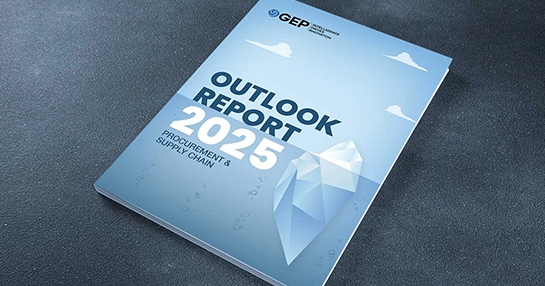
The Rise of AI in Sourcing Technology
- Sourcing technology is transforming supply chain management and procurement.
- It can help organizations navigate unpredictable disruptions, streamline processes, and boost profitability.
- By leveraging big data and AI, sourcing technology can provide organizations with actionable insights to make strategic decisions.
July 03, 2023 | Source to Pay 6 minutes read
Traditional sourcing methods have relied on manual systems like spreadsheets and fragmented reports. These methods are slow and not equipped to handle the rapid pace of change in today's markets.
Now, with advances in sourcing technology, vast amounts of data can be processed in real-time, providing organizations with actionable insights to make strategic decisions.
Data analytics can help companies forecast market trends, prepare for potential disruptions, and optimize their procurement strategies.
Sourcing technology is more than just a way to modernize procurement; it’s a strategic tool that can significantly impact a company’s bottom line.
With sourcing technology, procurement is no longer just about securing the lowest prices. It's about strategic sourcing — choosing suppliers and parts that align with the company's long-term goals and market dynamics.
Sourcing technology can shorten procurement cycles, boost efficiency, and spur innovation. By integrating data from multiple sources, companies can gain a holistic view of their supply chain, facilitating quicker and more informed decision-making.
Embracing AI in Sourcing
Artificial Intelligence (AI) is a driving force behind the rise of sourcing technology. AI can gather, analyze, and present a massive volume of supply chain data, enabling professionals to make strategic decisions.
AI can analyze global media and market signals, integrate them with internal data, and derive insights specific to a company's business. AI doesn't just provide information about the present; it also forecasts future trends, helping companies take proactive measures.
AI-powered dashboards guide professionals with recommended actions, such as analyzing the risks associated with specific commodities and suppliers or updating the prices of raw materials and parts. This technology allows companies to communicate rapidly with their entire supply base, slashing negotiation timelines.
Also read: Sourcing Strategies for the New Normal
Strategic Advantages of Sourcing Technology
Sourcing technology offers businesses several strategic benefits that go beyond cost savings.
- Performance Improvements: With the potential for disruptions at every turn, supply chain professionals must work proactively to secure materials and deliver products. Sourcing technology can lead to significant improvements in top- and bottom-line performance.
- Internal Efficiencies: Sourcing technology significantly can reduce time spent on negotiation preparations and bid analysis. It frees procurement teams from transactional work, allowing them to manage suppliers more effectively and improve overall supply chain performance.
- Faster Time to Market: By better understanding the marketplace and the risks associated with specific suppliers, organizations can make better procurement and pricing decisions. This leads to improved innovation processes and faster times to market.
Benefits of AI in Sourcing and Procurement
AI transforms sourcing and procurement by extracting actionable insights from complex datasets, enabling strategic decision-making. Advanced spend analytics uncover consolidation opportunities and demand patterns that remain hidden in traditional analysis. Contract intelligence systems identify non-compliance risks and renewal opportunities while automating routine reviews. Supplier evaluation becomes more objective through multi-dimensional risk scoring that incorporates financial stability, sustainability metrics, and performance history.
Procurement teams witness dramatic efficiency improvements through automated processing of routine transactions and requisitions. Perhaps most significantly, AI liberates procurement professionals from tactical activities, enabling them to focus on relationship management, innovation sourcing, and strategic initiatives that deliver greater organizational value.
Best Practices for Using AI in Procurement
Successful AI implementation in procurement requires thoughtful approaches that balance technological capabilities with organizational realities. Begin with clearly defined use cases that address specific business challenges rather than implementing technology for its own sake. Prioritize initiatives based on financial impact, implementation feasibility, and strategic alignment.
Data quality demands particular attention — establish rigorous governance processes that address master data management, taxonomy consistency, and cleansing protocols. Recognize that even the most sophisticated algorithms cannot overcome fundamentally flawed data inputs.
Cross-functional collaboration proves essential for sustainable implementation. Involve stakeholders from IT, finance, legal, and business units to ensure the solution addresses enterprise-wide requirements. This collaborative approach helps overcome resistance while ensuring AI solutions integrate effectively with existing processes.
Change management requires deliberate focus throughout the implementation journey. Communicate AI's role as augmenting rather than replacing human expertise, demonstrating how technology handles routine tasks while enabling more strategic work. Provide transparency into how algorithms generate recommendations to build trust and drive adoption.
Start with guided implementation before advancing to autonomous operation. Initial deployments should incorporate human review of AI-generated insights and recommendations, gradually expanding system authority as performance and confidence increase.
Measure outcomes comprehensively beyond cost savings to include efficiency improvements, risk reduction, and supplier innovation. These broader metrics demonstrate AI's full value proposition while justifying continued investment.
Finally, develop internal capabilities through training programs that enhance both technical competencies and analytical thinking, creating a procurement workforce that effectively partners with AI systems.
The Future of Sourcing & Procurement with AI
Procurement's AI-powered future will feature increasingly autonomous systems that manage routine sourcing events with minimal human intervention. Cognitive procurement advisors will provide real-time guidance during complex negotiations, suggesting strategies based on supplier behavior and market conditions. Predictive intelligence will enable truly proactive procurement, identifying requirements before internal stakeholders recognize them. Supplier relationships will transform through collaborative AI platforms that continuously optimize specifications, costs, and delivery parameters. Blockchain integration will ensure transaction transparency and contract compliance without manual verification. This evolution will fundamentally reposition procurement professionals as strategic orchestrators who leverage AI-generated insights to drive innovation, sustainability, and competitive advantage while algorithms handle execution.
Benefits of AI in Sourcing and Procurement
AI transforms sourcing and procurement by extracting actionable insights from complex datasets, enabling strategic decision-making. Advanced spend analytics uncover consolidation opportunities and demand patterns that remain hidden in traditional analysis. Contract intelligence systems identify non-compliance risks and renewal opportunities while automating routine reviews. Supplier evaluation becomes more objective through multi-dimensional risk scoring that incorporates financial stability, sustainability metrics, and performance history.
Procurement teams witness dramatic efficiency improvements through automated processing of routine transactions and requisitions. Perhaps most significantly, AI liberates procurement professionals from tactical activities, enabling them to focus on relationship management, innovation sourcing, and strategic initiatives that deliver greater organizational value.
Best Practices for Using AI in Procurement
Successful AI implementation in procurement requires thoughtful approaches that balance technological capabilities with organizational realities. Begin with clearly defined use cases that address specific business challenges rather than implementing technology for its own sake. Prioritize initiatives based on financial impact, implementation feasibility, and strategic alignment.
Data quality demands particular attention — establish rigorous governance processes that address master data management, taxonomy consistency, and cleansing protocols. Recognize that even the most sophisticated algorithms cannot overcome fundamentally flawed data inputs.
Cross-functional collaboration proves essential for sustainable implementation. Involve stakeholders from IT, finance, legal, and business units to ensure the solution addresses enterprise-wide requirements. This collaborative approach helps overcome resistance while ensuring AI solutions integrate effectively with existing processes.
Change management requires deliberate focus throughout the implementation journey. Communicate AI's role as augmenting rather than replacing human expertise, demonstrating how technology handles routine tasks while enabling more strategic work. Provide transparency into how algorithms generate recommendations to build trust and drive adoption.
Start with guided implementation before advancing to autonomous operation. Initial deployments should incorporate human review of AI-generated insights and recommendations, gradually expanding system authority as performance and confidence increase.
Measure outcomes comprehensively beyond cost savings to include efficiency improvements, risk reduction, and supplier innovation. These broader metrics demonstrate AI's full value proposition while justifying continued investment.
Finally, develop internal capabilities through training programs that enhance both technical competencies and analytical thinking, creating a procurement workforce that effectively partners with AI systems.
The Future of Sourcing & Procurement with AI
Procurement's AI-powered future will feature increasingly autonomous systems that manage routine sourcing events with minimal human intervention. Cognitive procurement advisors will provide real-time guidance during complex negotiations, suggesting strategies based on supplier behavior and market conditions. Predictive intelligence will enable truly proactive procurement, identifying requirements before internal stakeholders recognize them. Supplier relationships will transform through collaborative AI platforms that continuously optimize specifications, costs, and delivery parameters. Blockchain integration will ensure transaction transparency and contract compliance without manual verification. This evolution will fundamentally reposition procurement professionals as strategic orchestrators who leverage AI-generated insights to drive innovation, sustainability, and competitive advantage while algorithms handle execution.
Conclusion
The implementation of sourcing technology can bring about transformational changes in an organization's sourcing and supply management operations. The age of strategic sourcing is upon us, and companies that don't seize this opportunity risk falling behind.



